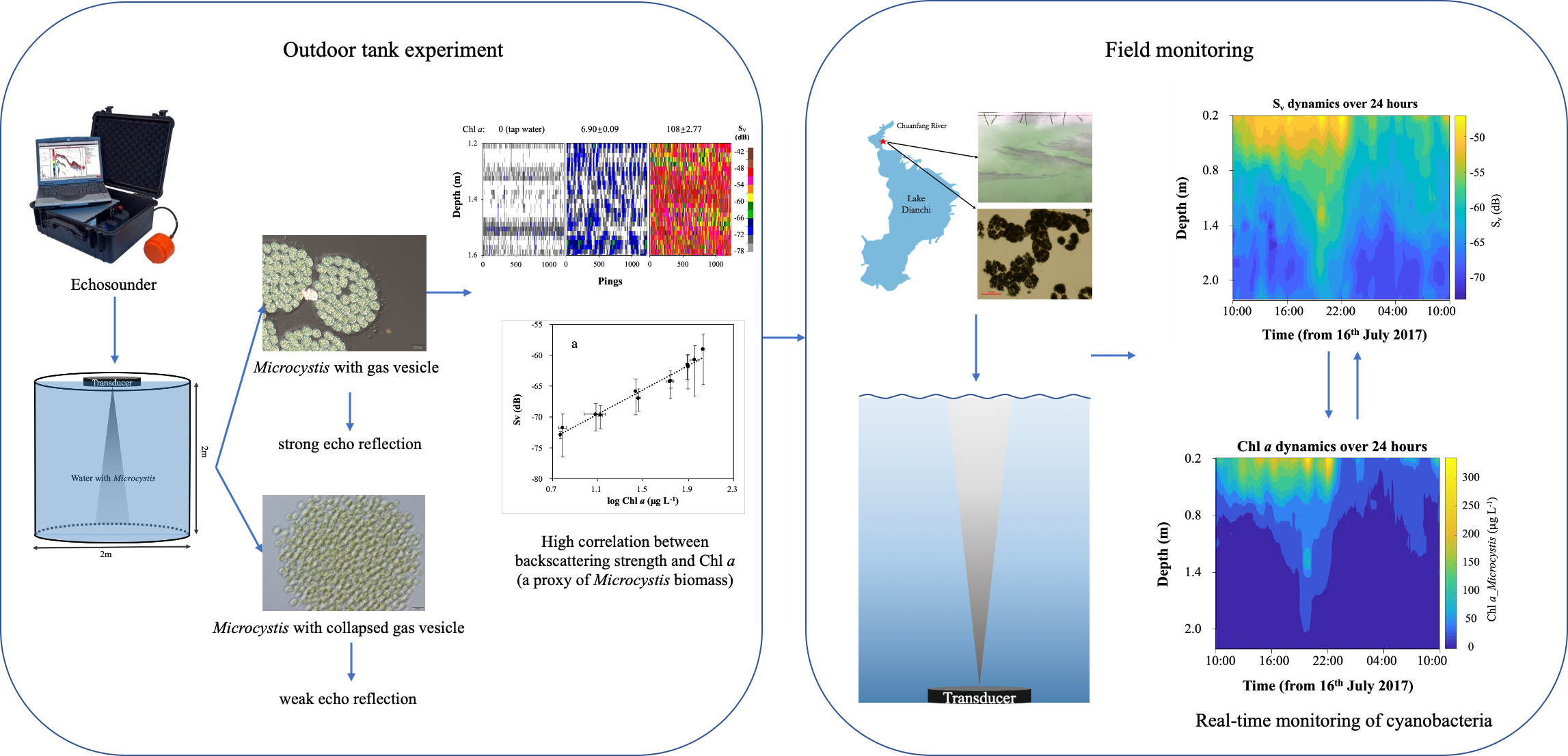
Newsroom
Hydroacoustic Techniques is Developed for Real-time Monitoring of Microcystis Bloom in Lakes
Harmful cyanobacterial blooms pose a serious environmental threat to freshwater lakes and reservoirs. Investigating the dynamics of toxic bloom-forming cyanobacterial genus Microcystis is a challenging task due to its huge spatiotemporal heterogeneity on the macro- and micro-scales. In contrast to conventional hydrobiological sampling methods, the hydroacoustic technology allows for rapid scanning of the water column synoptically and thus has a significant potential for rapid, non-invasive in situ quantification of aquatic organisms and monitoring their populations.
Researchers led by Prof. SONG Lirong from Institute of Hydrobiology (IHB) of Chinese Academy of Sciences, in collaboration with Prof. Ilia Ostrovsky and Assaf Sukenik from the Yigal Allon Kinneret Limnological Laboratory, Israel Oceanographic and Limnological Research, found the gas-bearing Microcystis colonies are strong backscatterers at ultrasound frequencies. This property is related to the presence of gas vesicles in cells. Their study was published online in the journal Water Research with the title of "Bloom-forming toxic cyanobacterium Microcystis: Quantification and monitoring with a high-frequency echosounder".
Researchers found, in the tank experiments, a strong logarithmic relationship between the sv and Microcystis biomass proxies. The sv/B ratio remained unchanged over a wide range of B concentrations when the same source of Microcystis material was used. More importantly, the measurements in Lake Dianchi also revealed strong logarithmic relationships between sv and Microcystis biomass.
The proposed acoustic method is essential for in situ monitoring of spatiotemporal variability and vertical migration of Microcystis in lakes, and should be a powerful tool for accurate monitoring and assessment of this cyanobacterium at high spatiotemporal resolution in water bodies.
This research was supported by the Joint NSFC-ISF Research Program and Major Science and Technology Program for Water Pollution Control and Treatment.

The research route of in-situ monitoring of Microcystis dynamics using hydroacoustics techniques (Image by IHB)